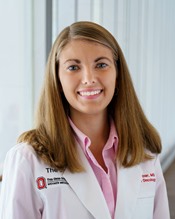Program Information
Examining Student Conceptual Understanding of Dose in Radiation Therapy by Comparing Frameworks of Experts and Novices
A Cetnar*, N Gupta , James Cancer Hospital and Solove Research Institut, Columbus, OH
Presentations
SU-I-GPD-E-1 (Sunday, July 30, 2017) 3:00 PM - 6:00 PM Room: Exhibit Hall
Purpose: Dose is one of the most fundamental concepts in radiation therapy because it defines the amount of energy delivered to a patient during treatment. It is important for therapists to have a fundamental understanding of how dose is defined and how the machines can be calibrated to deliver the appropriate dose to the patient. This study explores expert and novice understanding of dose to help inform the education of therapy students.
Methods: Professionals in radiation therapy were surveyed to develop questions for a pre- and post- test for the students. The results of the student responses were compared by both their conceptual gain after the unit was presented and to a standard rubric based on expert answers. The students also had an opportunity to explore the structuring of their conceptual understanding through concept mapping.
Results: Based on the results from the professional survey, it was found that there are three different tiers of expert understanding: physicist, therapist, and student. The students were assessed before and after the unit on dose, and it was found that the therapy class increased the pre-test score from an average of 8.8 ±1.3 to an average post-test score of 10.9 ±1.4. Regardless of how many correct concepts the students developed individually, the students came together to construct a concept map that had at least the amount of concepts as the most developed individual’s concept map in the group.
Conclusion: The results show that the therapy students already have practical conceptual ideas through previous classes and clinical experience, but may carry with them misconceptions. The results from this pilot study suggest that practical understanding is difficult to change through the current traditional educational methods for teaching the course. The greatest gains in student understanding were in theoretical understanding developed through the lecture, homework, and textbook.
Contact Email:
